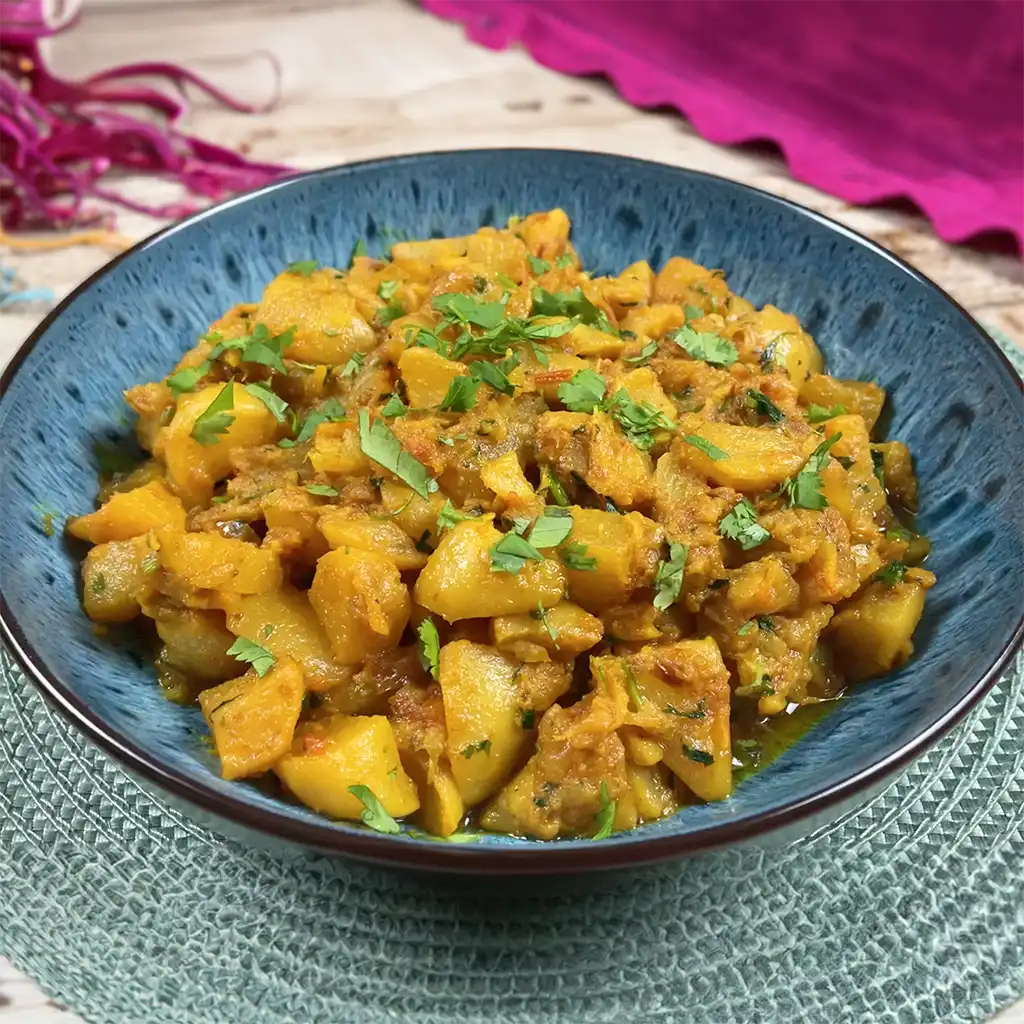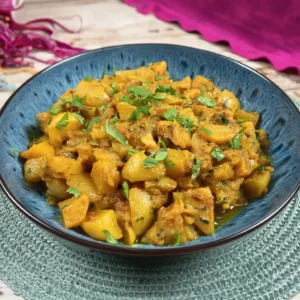
Originating from the heart of South Asian cuisine, turnip curry is a savory delight that brings together the earthy flavors of turnips with a blend of aromatic spices.
This dish offers a delightful twist to your regular curry repertoire, adding a unique texture and taste that’s sure to please your taste buds.
While the thought of cooking curry might seem daunting to some, fear not! This recipe is designed with simplicity in mind, making it accessible even to beginners in the kitchen.
With just a handful of ingredients and straightforward instructions, you’ll be whipping up a delicious turnip curry in no time.
Traditionally served with homemade naan or chapatti, this dish is a wholesome meal that’s perfect for both weekday dinners and special occasions.
Expert Tip: Pay attention to the consistency of the curry as it cooks. If it becomes too thick, you can add a little more water to achieve your desired consistency.
Turnip (Shalgam): Turnips add a unique earthy flavor and hearty texture to the curry. They soak up the spices and develop a delicious taste as they cook.
Oil: Oil serves as the cooking medium and helps to sauté the onions and spices, adding richness to the curry.
Onions: Onions provide a sweet and savory base for the curry, enhancing its depth of flavor.
Tomatoes: Tomatoes add acidity and sweetness to the curry, balancing out the flavors of the spices.
Ginger Paste: Ginger paste adds a warm, spicy flavor and aroma to the curry, complementing the other spices.
Garlic Paste: Garlic paste contributes a pungent, savory flavor to the curry, enhancing its overall taste.
Green Chillies: Green chillies provide heat and a fresh, vibrant flavor to the curry, adding a kick of spice.
Salt: Salt enhances the flavors of the ingredients and helps to balance the overall taste of the curry.
Chilli Powder: Chilli powder adds heat and depth of flavor to the curry, giving it a rich and spicy taste.
Turmeric Powder (Haldi): Turmeric powder adds a vibrant yellow color to the curry and imparts a warm, earthy flavor.
Coriander: Fresh coriander adds a burst of freshness and herbaceous flavor to the curry, elevating its taste.
Expert Tip: Be mindful not to overcook the turnips, as they can become mushy if cooked for too long.
Expert Tip: Feel free to adjust the amount of spices according to your preference. If you like your curry spicier, add more chilli powder or green chillies.
Turnip curry typically takes about 45 minutes to 1 hour to cook from start to finish. This includes preparation time for chopping the vegetables and cooking time for simmering the curry until the turnips are tender.
While turnips are traditional for this curry, you can certainly experiment with other vegetables if you prefer. Potatoes, carrots, cauliflower, or even mixed vegetables can be used as substitutes or additions to customize the dish to your taste.
The level of spiciness in turnip curry can be adjusted according to your preference. If you prefer a milder curry, you can reduce the amount of green chillies or chilli powder. Conversely, if you like it spicier, you can increase the amount of spices or add additional chillies.
Yes, turnip curry can be made ahead of time and stored in the refrigerator for up to 3-4 days. Simply reheat it on the stovetop or in the microwave before serving. The flavors often develop and intensify after sitting, making it even more delicious the next day.
Yes, turnip curry can be frozen for longer-term storage. Allow the curry to cool completely before transferring it to freezer-safe containers or zip-top bags. It can be frozen for up to 2-3 months. To reheat, thaw the curry overnight in the refrigerator and then reheat it on the stovetop or in the microwave until heated through.
Here are some more recipes for you to enjoy! If you my recipes don’t forget to rate and leave a comment.
If you have any recipe suggestions, please do not hesitate to ask me. A great way to stay in contact with me is through Instagram, Facebook, Twitter and YouTube. Don’t forget to tag me @CookwithNabeela in your recipe photos!

Subscribe now to receive my latest recipes directly in your inbox. Stay up-to-date and never miss out!

I love to cook! I want to share with you my favourite, delicious family-friendly recipes. I want to inspire you to create fantastic food for your family every day.
Latest comments (1)
Could you make this with a pre-made curry paste